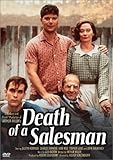
-Rob; Here we begin with the big “S” (yes, we’ll get to that). I’ve made the file a little bigger here so that you can see some quick margin notes there on the bottom left and that page number on the right. At this time we hadn’t really decided on the chapter header as part of the page count, so numbering the original storyboards is off from what you’ll see online. But we eventually figured things out.
On the subject of pagination you will also find that from here on in there are citations from both the Gabler Revised text that is commonly used and the original 1922 edition. All the work you’ll see done here is from the ’22 (for various reasons). There are many edition that you might be following along and it makes it hard to find the right passage at times. A new online resource comes to us now (2018) with John Hunt’s excellent Joyce Project. It is an informative guide for new and experienced readers alike, but it also has a wonderful feature six different editions to the pagination!
[cf. Gabler 3:1, 1922 p. 3]
-Mike; Some pudgy guy is carrying a bowl to the top of a tower. So begins the most important novel of the twentieth century. A ceremony of sorts is about to happen.
This is not our first main character, but is instead a secondary one–this is his biggest scene. He’s based on a real acquaintance of Joyce’s Oliver St. John Gogarty, a physician and writer who would go on to be a Senator in the Irish Free State. In 1904, he rented an abandoned military fortification outside the city, which he lived in and would use as a kind of salon for over twenty years. Joyce lived there, but only for a week in September 1904.
Let us say something obvious. Living in an unheated Napoleonic fortification, 7 1/2 miles from the center of town as the crow flies, is not a practical decision.
And one more obvious thing–there’s a practical reason Mulligan comes to the top of the tower to shave. It’s very dark and smoky in the living quarters below, not to mention the heady aroma of one rather unclean Dedalus (more on that later) and a sleeping Englishman.
Rob’s drawing gives us an intriguing birds-eye view that conveys at least two important pieces of information: a) we’re out in the middle of nowhere, and b) Mulligan is putting on a show without an audience. Not having an audience is intolerable for Mulligan, so he will shortly summon Stephen Dedalus to serve as an altar boy to his perverse shaving mass. Making the “S” extra big, like Random House did when they designed the first American edition of Ulysses, Rob really makes it stand off the page. Some scholars have taken the fact that the book begins with an S to suggest that Stephen is the focus of the early chapters… we just like the way it looks and how it lends an epic feel.
I’ve always thought Mulligan gets a bad rap… and I identify with him in a way. Here, at the beginning of the day, he seems a little glib, a little snobby, but he’s more sensible than Stephen. And he’s funny and stately and plump.
We’ll meet Stephen in a minute, who is skinny and anxious. If we were casting Mulligan, we’d need someone a little officious, with a touch of wickedness and a sharp wit, a little aristocratic, a little paunchy, someone not entirely in control of their appetites but who’s comfortable with that…. a young John Malkovitch, perhaps?
<< previous | next >>
View this Page of the Comic
Reader’s Guide for I: Telemachus
Dramatis Personae for I: Telemachus
____________________________________________________________
You can buy copies of the works mentioned by clicking on the links below.




 The unfortunate but now-consequently-famous friend of James Joyce who stood as the model for
The unfortunate but now-consequently-famous friend of James Joyce who stood as the model for 



